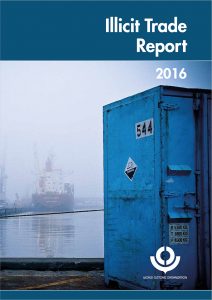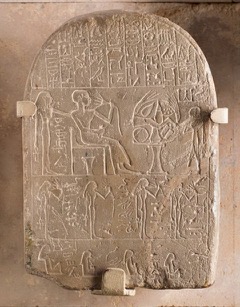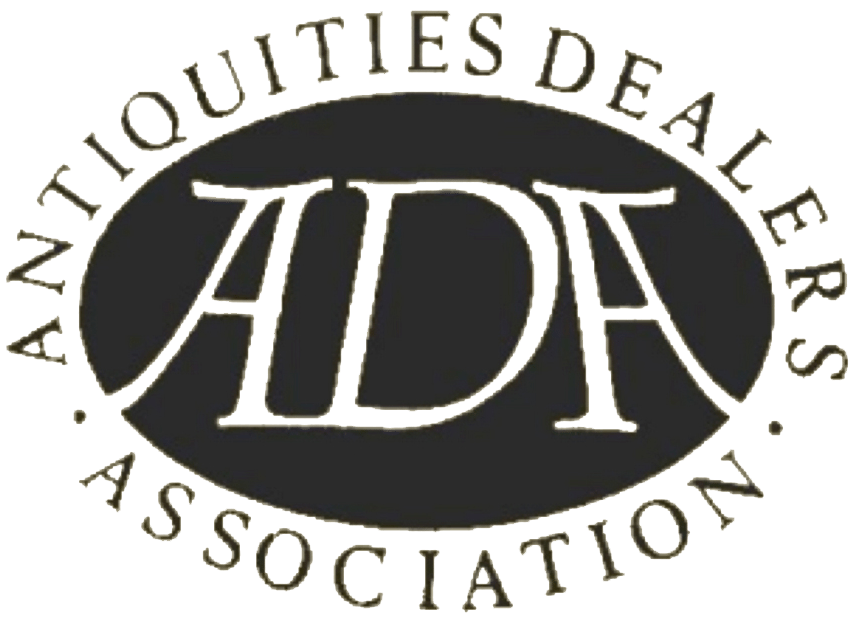by Antiquities Dealers' Association | Nov 28, 2018 | News, Uncategorized |
The ADA has been working closely with IADAA to contribute important last-minute contributions to the Trilogue negotiations in Brussels on the import licensing issue.
The talks must settle on a proposal that compromises between proposals and amendments from the European Commission, Council of the European Union and committees within the European Parliament.
We still have significant concerns over compromise amendments being put forward for the final vote and so have joined with IADAA, CINOA and the European art Market Coalition (EAMC) to present a series of comments and objections for the art market to the office of Daniel Dalton MEP, rapporteur of the proposals, at his request, for consideration.
Key areas of concern included potential human rights breaches occasioned by proposals to restrict how owners may keep antiquities; further rights breaches based on proposals to reverse the burden of proof in showing an item to be untainted; inconsistencies with the application of the UNESCO Convention; value thresholds for qualifying works; delays in processing of licence applications and importer statements; and concerns over possible enforcement prior to a compulsory electronic system being fully operational.
A number of important questions remain on top of this, such as who will provide the necessary expertise for customs and how valuations will be conducted and confirmed. At present, the proposals are so complex and confusing that in places they contradict each other, which will not aid compliance. We have asked for any final proposals to be made simple, clear and user-friendly.
by Antiquities Dealers' Association | Mar 5, 2018 | News, Uncategorized |
 For some time now, anti-trade campaigners, NGOs, politicians and even international law enforcement agencies have stated that trafficked antiquities are the third largest source of terrorist financing after trafficked drugs and weapons. These claims have always been unsubstantiated and although Interpol quotes a similar claim on its Art Crime page (“The black market in works of art is becoming as lucrative as those for drugs, weapons and counterfeit goods”), it then contradicts this in detail in the Frequently Asked Questions on the same page.
For some time now, anti-trade campaigners, NGOs, politicians and even international law enforcement agencies have stated that trafficked antiquities are the third largest source of terrorist financing after trafficked drugs and weapons. These claims have always been unsubstantiated and although Interpol quotes a similar claim on its Art Crime page (“The black market in works of art is becoming as lucrative as those for drugs, weapons and counterfeit goods”), it then contradicts this in detail in the Frequently Asked Questions on the same page.
Now, however, the World Customs Organisation has included figures for trafficked cultural property, including antiquities, in its annual report for the first time and this gives us a clearer picture of what the situation really is. In summary, this is what it says:
Number of Seizures
Drugs: c.45,000
Weapons and ammunition: c.4500
Cultural property: 146
Of which antiquities (mostly coins, seals and jewels): c.70
So in terms of the number of seizures across these three areas, drugs account for 90.6% of seizures, weapons and ammunition 9.1%, cultural property 0.3%, of which antiquities account for 0.14%.
Volumes
Although there is no direct correlation between the three areas in terms of volumes seized, summary totals give some indication of comparative scale:
Drugs: c.1.5 million kilos
Weapons and ammunition: c.2.5 million pieces
Cultural property: 8483 items
Of which Antiquities: c.6600 items (including coins)
Details:
- Drugs: 1 million kilos of cannabis, 180,773 kilos of cocaine, 99,000 kilos of khat, approx. 200,000 kilos of opiates, psychotropic and other substances. Total c.1.5 million kilos. Number of seizures: c.45,000.
- Weapons & ammunition: number of pieces seized c.2.5 million. Number of seizures: c.4500.
- Cultural Property: 8483 objects seized (Of which Antiquities c.6600). Number of seizures: 146. (Of which Antiquities c.70)
Also included in the report are figures for seizures linked to environmental (i.e. animal and plant) products. Again, exact comparisons are not easy, but the number of seized items alone rises towards the 750,000 mark, while the total number of seizures reported was 2225.
by Antiquities Dealers' Association | Mar 3, 2018 | News, Uncategorized |
ADA adviser Ivan Macquisten has written a detailed analysis on the upcoming changes in data protection regulations for the EU for The Art Newspaper. This includes the Information Commissioner’s Office advice on what steps for businesses to take now. These changes will affect all businesses operating in the market to some degree. You can read Ivan’s article at this link.
by Antiquities Dealers' Association | Nov 10, 2017 | News, Uncategorized |
The Committee For Cultural Policy has highlighted the devastating theft of Viking material from the University Museum of Bergen. The burglary took place on the weekend of August 11-13 when the thieves climbed scaffolding to a seventh-floor window, broke in and stole 400 artefacts that were in temporary storage.
Full details available from the Committee For Cultural Policy website.
Further theft alert
 This Egyptian stele, pictured right has been stolen from the Musée de Marseille. It is 24cm x 17.5cm x 7cm. Please contact the police if you see it.
This Egyptian stele, pictured right has been stolen from the Musée de Marseille. It is 24cm x 17.5cm x 7cm. Please contact the police if you see it.
by Antiquities Dealers' Association | Nov 10, 2017 | Uncategorized, Views |
Collector Matthew Polk, a board member of the Committee For Cultural Policy and trustee of a number of museums, has written a detailed paper on how the war on terror has shifted cultural property policy from preservation to enforcement, with a number of unwarranted and unfortunate policies that have the potential to damage the trade and museums.
From grossly exaggerated figures for the revenues raised by ISIS from looted artefacts to the silencing of dissent on such topics, Polk studies their sources and effects, and notes how law enforcement policy has moved from evidence-based debate to political expediency.
“Reading this you could be forgiven for thinking that museums should just give up and close their doors,” writes Polk. “Museums take their public missions seriously and should be at the forefront of world cultural heritage preservation efforts. Instead, museums are being pushed aside as legislative efforts driven by a fear of terrorism create a nightmarish regulatory environment in which museums, their staffs, trustees and donors are often portrayed as villains.”
Proposals under the US TAAR Act are even worse: “It is a shocking but real possibility that US citizens and institutions could suddenly find themselves subject to thousands of foreign laws not even available in English which could be applied retroactively at the whim of government officials as will apparently now be the case in the EU,” Polk notes.
He also accuses law enforcement of preferring “high profile actions, such as the Elliot Ness style raids conducted during 2016 NYC Asia Week or Fish and Wild Life’s SWAT raids on Gibson Guitars in 2009 and 2011” and says this suggests that “they are more interested in high profile press coverage than in seeking cooperation to help stamp out illegal or destructive activities”.
“This is unfortunate as it has created an atmosphere of fear bringing less transparency to the art markets when what we need is more,” he concludes, adding: “Enforcement has also relied increasingly on civil forfeiture actions to seize objects even when no crime has been proven and customs continues to use administrative obstacles and minor paperwork errors as justifiable cause for seizing objects entering the country without having to prove they are in any way illegal.”
The full article appears on the Committee For Cultural Policy website.
by Antiquities Dealers' Association | Oct 4, 2017 | News, Uncategorized |
The European Commission’s 199-page Deloitte report into tackling cultural property trafficking now confirms that there is no evidence at all that terrorism-related cultural goods are entering the EU, or that an illicit market in cultural property run by organised crime exists.
Despite this, the European Commission plans to press ahead with more restrictive import/export legislation from January 2019 to tackle a problem it has identified does not exist, even though the Deloitte report acknowledges this will damage the international art market.
Read Ivan Macquisten’s latest blog summarising the issues at hand.

 For some time now, anti-trade campaigners, NGOs, politicians and even international law enforcement agencies have stated that trafficked antiquities are the third largest source of terrorist financing after trafficked drugs and weapons. These claims have always been unsubstantiated and although Interpol quotes a similar claim on its Art Crime page (
For some time now, anti-trade campaigners, NGOs, politicians and even international law enforcement agencies have stated that trafficked antiquities are the third largest source of terrorist financing after trafficked drugs and weapons. These claims have always been unsubstantiated and although Interpol quotes a similar claim on its Art Crime page ( This Egyptian stele, pictured right has been stolen from the Musée de Marseille. It is 24cm x 17.5cm x 7cm. Please contact the police if you see it.
This Egyptian stele, pictured right has been stolen from the Musée de Marseille. It is 24cm x 17.5cm x 7cm. Please contact the police if you see it.
Recent Comments